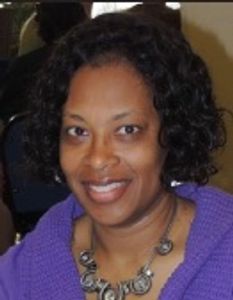Signed in as:
filler@godaddy.com
Signed in as:
filler@godaddy.com
This is a new feature offering reunion planning advice and guidance from guest contributors whose families have a history of successful reunions. Our first featured guest is Beth Boyer, President of the Ransom-Sease Family. The Ransom-Sease Family has an amazing newsletter that helps to keep family members connected year round, while creating a greater sense of anticipation for the reunion. Below Beth provides her take on Planning the Reunion, Deciding Locations and Events, The Newsletter, Involving Young People, and COVID & Future Reunions.
------------------------------------------------------------------------------------------------------------------------
Beth Boyer, President of the Ransom-Sease Family - GUEST CONTRIBUTOR
PLANNING THE REUNION:
A lot of families do reunions every other year or every three years, but our reunion has been held 61 years consecutively. The family has five regions, and two reps for each region. Ideally, we have a younger family member paired with a more seasoned member. The responsibilities of those representatives include staying in contact with the family in their region. We do a newsletter twice a year and we share family updates. So, if someone had a baby, retired, passed away, got a job, etc. those sorts of updates are included. And the regional rep will reach out to find out those things. We also have a Facebook page where people can post updates. And then someone will pass along that information to the planning team.
DECIDING LOCATIONS AND EVENTS:
We’re always kind of planning for the next year’s reunion. As President, I will go to a region to visit and talk with the people from that region along with their regional rep and come up with some ideas for a potential location. From there, it’s kind of seeing who comes to the meetings. We usually meet four times a year. And we talk about what we think we want to do for this year’s reunion. They can critique last year’s reunion and say, “we like what they did, let’s do something similar” or they can say, “that missed the mark, let’s do something different.”
We like to plan reunions over a two-year period. Our reunions are typically in (late) July. When we come to the reunion, we always do a business meeting, either Saturday early evening or Sunday morning before our worship service. (Everyone is invited to attend.) At that meeting, we distribute information about the next year’s reunion. So we have to know at least a year out what the rooms are, and what the costs will be.
We mail out a letter to all the family no later than February; at that point you’ve got to have a rough idea of all the activities that are going to be held and what the registration fee is. We give them information about what the airfare will be and list popular attractions for the location.
THE NEWSLETTER:
We used to do it three times a year, but we had to cut it back to twice because it takes some time to gather the information. We’ll show pictures from the last reunion, recap that reunion, and introduce the next year’s reunion, so that if people did not attend the reunion, it will hopefully pique their interest. Or if they see photos of people from last year, it gets them ready so when the registration letter comes out in February, they’ve heard about it previously in the newsletter. We’re proud of what (newsletter editor) Charlotte Glover and her husband Buddy have put together. It’s so creative and they really have a gift that they’re sharing with the family. It’s the glue that keeps us together until we get to the reunion.
INVOLVING YOUNG PEOPLE:
It’s about making a connection. Its looking at the young people that come to the reunion and trying to pick a few that seem more interested because it’s a struggle to get young people to really be involved unless there's something that they can relate to. So we really try to get young people involved in the initial planning by asking, “what do you think we need to do to get more family members your age to come to the reunion?” We try to keep them engaged. Some stick with it, some don’t. One of our communication team members is 25, so we were really excited that when we had elections, she volunteered. I think she was motivated because her aunt had led the most recent reunion. So, some are motivated when they see their closely related relatives volunteering. They’ve got to have someone that they are most closely connected with.
COVID AND FUTURE REUNIONS:
We probably will end up adding Zoom. Our traditional reunion is typically four days. We’re going to do a one-day cookout on Labor Day instead. Not sure if it’s going be Zoom or Facebook live. But something that will allow people who have access to a smart phone. We didn’t want to only limit it to people in driving distance. There could be some family members that will travel. We will practice social distancing in terms of having families who live together sitting at the same tables, and face masks will be provided. It’s not as formal as we’ve done in the past. Typically, we have a 3 to 4-day reunion, and a set location fee that ranges from $50 to $80. We’re not clear on how many family members were affected economically by COVID, so we’re charging $10 for adults, free for children. This is how our reunion started 62 years ago. This is our approach to it and trying to include the social media aspect so those who don’t feel comfortable or aren’t close enough to travel for a one-day cookout can still participate.
You can view a copy of the Ransom-Sease Family newsletter below.

Copyright © 2025 National Family Reunion Institute - All Rights Reserved.

-Be in the know regarding family reunion planning and genealogy
-Join our community of family reunion planners
-Get info, tips and other good stuff.